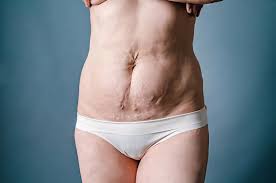Genetics plays a significant role in determining an individual's body shape, fat distribution, and response to weight loss interventions. Understanding how genetics influences liposuction outcomes is essential for both patients and surgeons. For more detail visit our site My experience with liposuction in Riyadh. Here's an in-depth exploration of the role of genetics in liposuction outcomes:

1. Genetic Determinants of Body Fat Distribution
- Fat Storage Patterns: Genetics largely dictate where fat is stored in the body. Some individuals may have a genetic predisposition to store excess fat in certain areas, such as the abdomen, hips, thighs, or arms.
- Body Shape: Genetic factors influence body shape and proportions, including the waist-to-hip ratio and overall silhouette. These factors can impact the distribution of fat deposits and the desired outcomes of liposuction.
2. Response to Weight Loss and Fat Reduction
- Metabolic Rate: Variations in metabolic rate, which are partially influenced by genetics, can affect the body's ability to burn fat and lose weight. Individuals with a slower metabolism may find it more challenging to achieve significant fat loss through diet and exercise alone.
- Fat Cell Distribution: Genetic factors also influence the number and size of fat cells in different body areas. Liposuction permanently removes fat cells from targeted areas, but genetic predispositions may affect how remaining fat cells respond to changes in weight and body composition.
3. Predicting Liposuction Outcomes
- Patient Assessment: Surgeons consider a patient's genetic predispositions, body shape, and fat distribution patterns during the preoperative assessment to set realistic expectations and tailor the liposuction approach accordingly.
- Skin Elasticity: Genetics play a role in determining skin elasticity and its ability to retract after fat removal. Patients with good skin elasticity tend to achieve smoother and more natural-looking results compared to those with poor skin tone.
4. Limitations and Considerations
- Individual Variability: While genetics influence overall body shape and fat distribution, there is considerable variability among individuals. Factors such as age, lifestyle, hormonal influences, and environmental factors also contribute to liposuction outcomes.
- Realistic Expectations: Patients should have realistic expectations about the extent of fat reduction and body contouring achievable through liposuction, considering their unique genetic makeup and anatomical characteristics.
5. Future Directions and Research
- Genetic Screening: Advancements in genetic testing may allow for personalized assessments of liposuction candidates based on their genetic predispositions and metabolic profiles.
- Precision Medicine Approaches: Incorporating genetic information into treatment planning may lead to more tailored and effective liposuction procedures, optimizing outcomes and patient satisfaction.
Conclusion
Genetics significantly influence body fat distribution, metabolic rate, and response to weight loss interventions, including liposuction. By understanding the role of genetics in liposuction outcomes, surgeons can better assess patients, set realistic expectations, and tailor treatment approaches to individual needs. While genetics provide valuable insights, they are just one of many factors contributing to liposuction outcomes, and a comprehensive approach that considers multiple factors is essential for achieving optimal results. Continued research into the genetic determinants of liposuction outcomes may pave the way for more personalized and effective treatments in the future.
